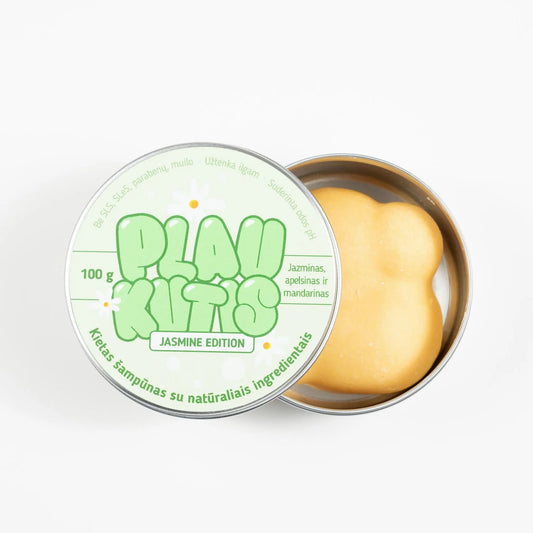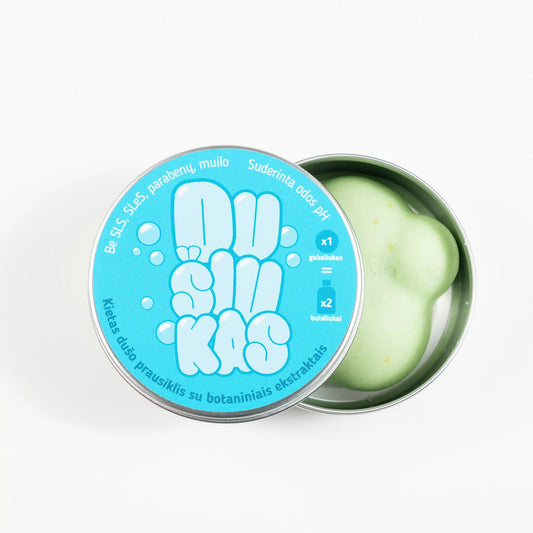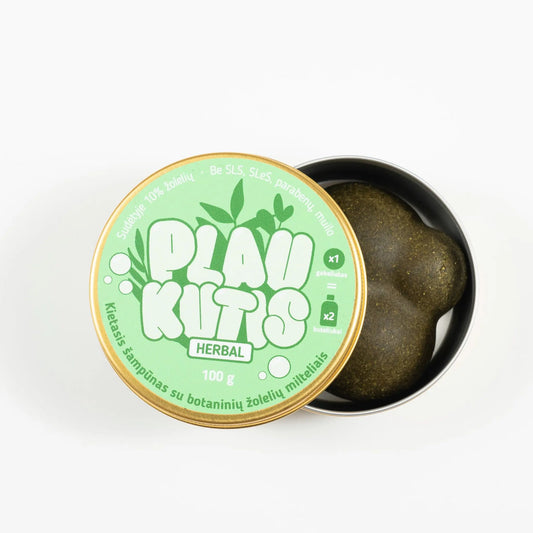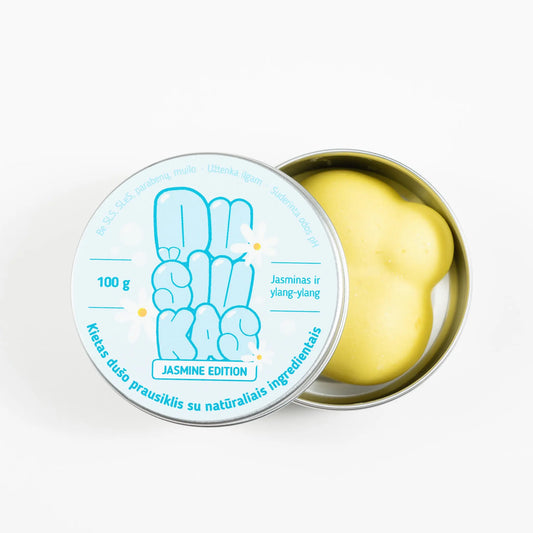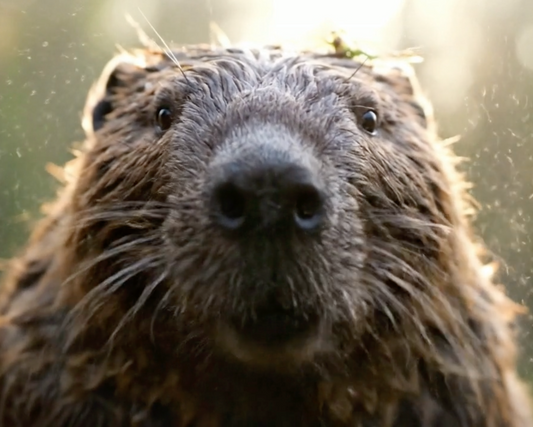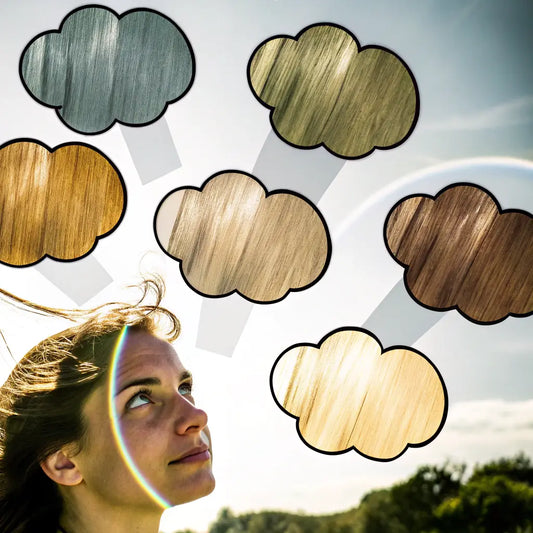Why does your hair sometimes feel dry and rough, even after using conditioner? The secret lies in how and in what way you use conditioner. Conditioning is an important step in any hair care routine. It helps keep your hair healthy, moisturized, and manageable. However, not all hair types require the same amount of conditioning.
In this guide, we'll discuss how to tailor your conditioning routine to different hair types. You'll learn about the importance of conditioning, the best types of conditioners, and tips for soft, smooth hair.
Why conditioning is important
Conditioning is essential to maintaining hair's moisture and strength. It smoothes the hair cuticle, reduces frizz, and makes hair easier to comb. Regular conditioning also helps protect hair from damage caused by styling, heat, and environmental factors. The right conditioner can add shine and softness to your hair.
However, not all conditioners are suitable for every hair type. Using the wrong product can leave your hair feeling heavy, greasy or dry. It is therefore important to tailor your conditioning routine to your hair's needs.
1. Straight hair: keep it smooth and light
Importance : Straight hair has a smooth surface, which makes it naturally shiny. However, natural oils travel more easily down the hair shaft, which can make it look greasy, especially if your hair is thin. However, conditioning is essential to maintain smoothness, prevent frizz, and protect your hair from damage.
Best conditioning practices :
- Conditioner type : Choose a lightweight, leave-in conditioner. Look for “volume-boosting” or “lightweight” formulas that won’t weigh down fine hair. If your hair is thick, choose a hydrating conditioner to lock in moisture.
- How to use : Apply conditioner only to the mid-lengths and ends of your hair. Avoid the scalp to prevent hair from looking greasy.
- Using a leave-in conditioner : Use a lightweight spray that adds shine and smoothness. This is especially good for hair that is prone to frizz.
- Deep Conditioning : For straight hair, deep conditioning is usually only needed once a month. Opt for a lightweight, protein-rich mask to strengthen your hair.
Tips for straight hair :
- After conditioning, rinse your hair with cold water to close the cuticles and increase shine.
- Avoid heavy, oil-based conditioners as they can make your hair feel greasy.
2. Wavy hair: highlight and accentuate the waves
Importance : Wavy hair is somewhere between straight and curly, with a natural “S” shape. This hair type often experiences frizz and can become dry if not properly moisturized. Conditioning helps to enhance the waves, adds moisture, and reduces frizz.
Best conditioning practices :
- Conditioner type : Choose a lightweight, hydrating conditioner. Look for products that add moisture without weighing down your waves. Avoid heavy creams that can flatten your natural wave pattern.
- How to use : Apply conditioner from mid-lengths to ends. Wavy hair needs extra moisture on the ends as they are prone to dryness.
- Using a leave-in conditioner : A leave-in conditioner spray or cream is great for wavy hair. It helps to accentuate waves, reduce frizz, and add moisture.
- Deep Conditioning : Use a deep hydrating mask every 2-3 weeks to restore moisture and maintain wave definition.
Tips for wavy hair :
- Use a wide-toothed comb to distribute conditioner evenly and reduce breakage.
- Don't rinse the conditioner out completely. Leave a little in to enhance the waves and provide extra moisture.
3. Curly hair: nourish and emphasize curls
Important : Curly hair is naturally dry because natural oils have a hard time traveling down the curled strands. This hair type needs regular conditioning to keep it moisturized, reduce frizz, and enhance its texture. Without proper conditioning, curls can become frizzy, tangled, and prone to breakage.
Best conditioning practices :
- Conditioner type : Choose a rich, moisturizing conditioner with nourishing ingredients like shea butter, coconut oil, or aloe vera. Look for products specifically formulated for curls to enhance their texture and reduce frizz.
- How to use : Apply conditioner generously from roots to ends. Curly hair needs moisture throughout to maintain its shape and health.
- Use a leave-in conditioner : Using a leave-in conditioner is essential for curly hair. It helps lock in moisture, reduces frizz, and enhances curls. Opt for a leave-in conditioner to ensure maximum hydration.
- Deep Conditioning : Deep condition your hair every week with a rich, hydrating hair mask. This step restores moisture lost through styling and environmental exposure.
Tips for curly hair :
- Comb your hair in the shower using a wide-toothed comb while it's still coated in conditioner. This helps prevent breakage and defines curls.
- Try the “squeeze and condition” method: apply conditioner, then gently scrunch your hair upwards to accentuate curls and increase moisture absorption.
4. Spiral Hair: Deep Hydration for Strong Spirals
Importance : Spiral hair has a tight curl pattern, making it the most prone to dryness. Natural oils have a hard time traveling through the spiral structure, so this hair requires intense moisture. Conditioning is essential to keep the spirals moisturized, soft, and manageable. It also helps reduce breakage and frizz.
Best conditioning practices :
- Conditioner type : Choose an ultra-hydrating conditioner that is enriched with natural oils, butters, and proteins. Look for ingredients like argan oil, avocado oil, and honey, which are great for deep hydration.
- How to use : Apply conditioner generously, focusing on the entire length of the hair. Spiral curls benefit from moisture layering, so use product sparingly.
- Using a leave-in conditioner : Use a thick, creamy type of leave-in conditioner to provide long-lasting moisture. It helps keep curls soft and reduces tangles.
- Deep Conditioning : Deep condition weekly with a nourishing mask. Choose one that contains natural oils and proteins to strengthen and moisturize hair.
Tips for spiral hair :
- Apply conditioner in sections so that each strand is covered.
- After conditioning, lock in moisture with a natural oil, such as argan or jojoba oil.
Myth busting: conditioning misconceptions
-
Myth: Oily hair doesn't need conditioner .
- Truth : Even oily hair needs moisture. The key is to use a light conditioner and apply it only to the ends.
-
Myth: Leave-in conditioner is only suitable for dry hair .
- Truth : Leave-in conditioners can be beneficial for all hair types. They provide extra moisture, make detangling easier, and protect against styling damage.
-
Myth: You need to deep condition every wash .
- Truth : Deep conditioning too often can weigh down hair, especially fine or straight hair. Most hair types only need deep conditioning every 2-4 weeks.
-
Myth: You need to condition your scalp .
- Truth : Most conditioners are designed for the hair strands, not the scalp. Conditioning the scalp can leave residue and greasiness.
-
Myth: Conditioner needs to be rinsed out completely .
- Truth : For wavy, curly, or coily hair, leaving a little conditioner in can improve texture and reduce frizz.
Practical tips for conditioning different hair types
- Straight hair : Use a light conditioner and avoid applying it to the scalp. Rinse with cold water after conditioning to add shine to your hair.
- Wavy hair : Use a moisturizing conditioner and leave some in to enhance the waves. Comb through your hair with a wide-toothed comb to prevent breakage.
- Curly hair : Apply a generous amount of conditioner. Comb through hair in the shower while it is still wet and coated with conditioner. Deep condition once a week for best results.
- Spiral hair : Use a rich conditioner and section your hair to distribute it evenly. After conditioning, lock in moisture with natural oils.
Frequently asked questions about conditioning for different hair types
-
How often should I deep condition my hair?
- It depends on your hair type. Straight hair benefits from deep conditioning once a month, while curly and coily hair may need it weekly.
-
Can I skip conditioner if my hair gets oily?
- No, conditioner is essential to maintain hair health. Use a lightweight formula and apply only to the ends.
-
What is the difference between a rinse-out and a leave-in conditioner?
- Rinse-out conditioners provide instant hydration and smoothness, while leave-in conditioners provide continuous moisture and protection throughout the day.
-
Can I use regular conditioner as a leave-in?
- If necessary, yes, but use a small amount. Regular conditioners are thicker and can weigh down hair if used on wet hair.
-
How can I avoid weighing down my hair if it is thin?
- Choose a lightweight, volumizing conditioner. Apply it only to the mid-lengths and ends of your hair, avoiding the scalp.
Conclusion
Conditioning is an important part of any hair care routine, but it's not the same process for everyone. Understanding your hair type and unique needs will help you choose the right conditioners and methods. Whether your hair is straight, wavy, curly, or coily, adapting your conditioning routine will leave your hair smooth, healthy, and manageable.
So, discover the right products and techniques that suit your hair type. You’ll soon notice a big difference in how your hair looks and feels. Have more questions or tips? Join the conversation in the comments!
